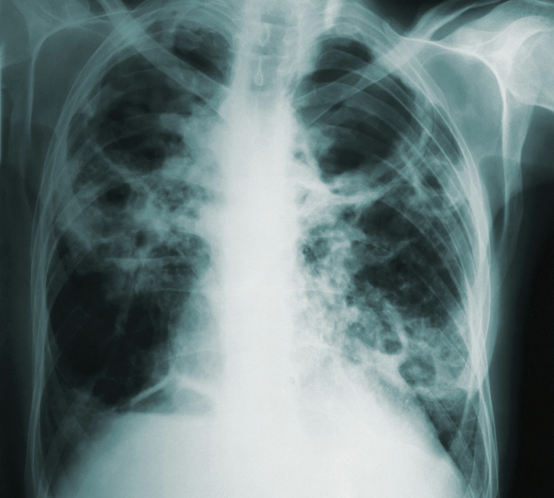TB
The World Health Organisation says Tuberculosis (TB) is still one of the world’s deadliest diseases and recent years have seen a worrying increase in incidences of drug-resistant TB.
As South Africa joins the world to commemorate World TB Day on 24 March, in a recent interveiw, chief director for TB control and management at the Department of Health, Professor Norbert Ndjeka, an Honorary Associate Professor of Medicine at the University of Cape Town, elaborated on how the day was an opportunity to renew commitment, inspire and take action to end TB.
As South Africa (SA) celebrates 30 years of freedom and democracy this year, Ndjeka reflects on the challenges and successes that the country has had in the past 30 years, with a focus on the past three years.
He said the past three years have been crucial in the fight against tuberculosis globally and particularly in South Africa.

“South Africa is [currently] number nine among the 30 countries that have the highest burden of Tuberculosis (TB) globally, accounting for 87% of global TB statistics. The Brazil, Russia, India, China and South Africa (BRICS) countries have 38% of global TB burden,” he said.
“All BRICS countries have lower TB incidence rates compared to South Africa. SA also has a higher proportion of people living with HIV (approximately 50%) compared to other BRICS countries,” said Ndjeka.
In an effort to accelerate the fight against TB in South Africa, Ndjeka said the National Tuberculosis Programme (NTP) developed the National TB Recovery Plan in March 2022.
The plan aims to enhance TB communication to create demand for TB testing, improve linkage to care, treatment, retention in care, TB prevention and TB data systems.
This plan is essentially a vehicle through which we are implementing the National Strategic Plan for HIV, TB, and sexually transmitted infections (STIs) for 2023-2028 and the TB Strategic Plan 2023-2028.
“That is why government decided to intensify TB testing to three million tests per year as from 2022. In 2022, we surpassed 2.5 million tests and in 2023 we surpassed 2.8 million tests. This is phenomenal because prior to 2020, the highest achievement as a country was 1.9 million tests on an annual basis. This is critical because we need to find TB to end TB,” Ndjeka explained.
He added that the plan was mainly put in place to address challenges caused by the Coronavirus (COVID-19).
“We noted TB testing and notifications dropped by 20% during COVID-19 lockdowns. However, TB has been a major challenge prior to COVID-19. Globally, 10 million people get active TB every year and 1.5 million people die from TB. Of these 10 million, 280 000 TB patients are in South Africa, and about 54 000 people die every year from TB,” said Ndjeka.
He added that while countries like China and India have more TB patients in absolute number, South Africa has a higher incidence of 464 people with TB for every 100 000 people.
“When I joined the NTP in 2009, I learned that 1% of the population of South Africa developed active TB, which translated to half a million people per year,” he added.
Highlighting some of the milestones observed in the past 30 years, Ndjeka said they include:
- The birth of the National TB Programme as a tool to combat TB happened in 1994, when South Africa gained democracy.
- TB guidelines 1996, although Directly Observed Treatment Strategy (DOTS) was introduced in 1997.
- Multidrug-resistant TB (MDR-TB) guidelines were endorsed in 2000.
- Development of MDR-TB and Extensively drug-resistant TB (XDR-TB) action plan was done in 2006.
- The introduction of National Strategic Plan for TB for 2007-2011.
- Development of infection control guidelines for TB was done in 2007.
- The 6-month Isoniazid Preventive Therapy (IPT) was introduced in 2010.
- GeneXpert test was introduced in 2011 as a replacement to smear microscopy as an initial TB diagnostic.
- The development of the National Strategic Plan (NSP) for HIV, STIs and TB for 2012-2016.
- And subsequent NSP for HIV, TB & STIs.
How to end TB
In order to end TB, Ndjeka said the country needs to do three main things by 2035.
“We need to reduce TB incidence by 90% compared to 2015, reduce TB mortality by 90% compared to 2015 and reduce TB catastrophic cost by 100%. TB catastrophic cost means that an individual on TB treatment spends 20% or more of their monthly income on TB treatment,” he explained.
A study conducted by the World Health Organization in 2021 showed that 56% of TB patients in South Africa undergo catastrophic cost, despite TB treatment being free of charge in the country.
“While we have decreased TB incidence by 49% between 2015 (552,000) and by 280 000 in 2022, our treatment coverage has reached 77% for the first time. However, we still experience a high death rate and a high loss to follow up,” said Ndjeka.
While the drug resistant (DR-TB) data system has been very helpful, Ndjeka said drug susceptible TB data system has had a lot of challenges which the country department is attending to.
Other achievements include the introduction of a 6-month multidrug-resistant TB (MDR-TB) regimen for all eligible individuals in the country.
“MDR-TB was traditionally treated for 24 months, we reduced the duration of treatment to 18 months around 2014. In 2017, we introduced the 9-month regimen with injectable component; in 2018 we maintained the 9-month regimen with all-oral agents. Being the first country in the whole world to do so.
“In 2023, On September 1st, we introduced a 6-month all-oral regimen for all who are eligible, which translates to more than 95% of our drug-resistant TB annual cohort,” said Ndjeka.



 Facebook
Facebook Twitter
Twitter WhatsApp
WhatsApp